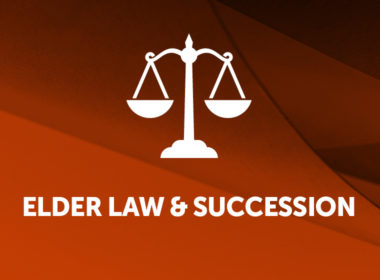Key decisions
- Prothonotary of the Supreme Court of New South Wales v Whit
[2023] NSWSC 264 - Brown v Weidig [2023] NSWSC 281
- Marschall v Elson [2023] SASCA 1
- Marschall v Elson [2023] SASCA 3
- Marschall v Elson [2023] SASCA 4
- BT Funds Management Limited (ACN 002 916 458) as trustee for the Retirement Wrap Superannuation Fund [2022] NSWSC 401
- Application of MLC Investments Limited (ACN 002 641 661) [2022] NSWSC 1541
- H.E.S.T Australia Ltd v Attorney-General (Qld); Mercy Super Pty Ltd v Attorney-General (Qld) [2022] QSC 221
- In the estate of Wenham [2023] SASC 44
- Secure Funding Pty Ltd v Mears [2023] NSWSC 217
- Re O’Day [2023] VSC 169
- Blue Mountains Succession conference 2023 (8 to 10 September 2023)
Gaol for executor held in contempt
In Prothonotary of the Supreme Court of New South Wales v Whit [2023] NSWSC 264 (Kunc J), the Supreme Court committed Ronald Whit to imprisonment for one year, subject to the sentence being suspended if he complied with the Court’s orders that gave rise to the proceedings against him. In doing so, the Court was at pains to observe that a significant feature of the matter was that Mr Whit’s conduct was integrally connected to his role as an executor. ‘In addition to the need both to punish Mr Whit and compel his compliance with the orders of which he was in contempt, his sentence may serve as a salutary reminder of the importance the Court attaches to the proper discharge of an executor’s duties and to deter departure from the high standard of conduct which is expected of executors both under the general law and statute’ (at [2]).
The Court explained that ‘Mr Whit sought to be appointed executor of the deceased’s estate. To be an executor is to hold an office (which in this context is a term of legal significance) which, although it might have its origin in a private instrument being a will, is given legal effect by an order of the Court and thereby is not just of a private character. It is a fiduciary position: both morally and legally a position of trust. It is not just a private function’ (at [70]). Moreover, ‘his contemptuous conduct occurred in the context of him being an executor and defendant in proceedings affecting the estate committed to his administration’ (at [72]).
Among other considerations, the Court determined the sentence of one year was appropriate having regard to ‘the need for a sentence that would be sufficient to deter others from similar conduct and remind executors generally of the importance of their obligations as such both inside and outside the courtroom’ (at [95]).
Disposal of remains
The issue in Brown v Weidig [2023] NSWSC 281 (Lindsay J) was the ‘disposal of the body of a young, single adult male (aged 23 years) who died by suicide, without forewarning or explanation, intestate, without issue or assets, living in the community of a dysfunctional family, resident in geographically separated parts of the State of New South Wales, with a mixed cultural heritage, and torn between the divergent cultures of his estranged parents’ (at [1]). The deceased’s body was in storage at a funeral home awaiting resolution of the dispute about what should be done with the body.
The first issue was whether the deceased should be buried or cremated. The deceased’s father wanted a burial, relying on his desire to conform to his understanding of local Aboriginal customary law. The deceased’s mother wanted cremation, relying on her close connection with her son.
The second issue was the location of the deceased’s remains, regardless of whether the deceased’s remains were buried or cremated. The third issue was access. The father favoured a publicly accessible gravesite in the Taree region, a barrier to the mother who lived in Sydney. The mother wanted to retain or scatter her son’s ashes. The mother was willing to share a half of the ashes with the father, allowing him to return remains of the deceased to country with traditional Aboriginal rites adapted to the circumstances.
The Court identified a range of factors which would influence its decision, including ‘the logistics and available funding for disposal of the body; the wishes or preferences of the deceased, if known; the wishes or preferences of the community or communities, in which the deceased lived (including, but not necessarily limited to, members of family); any cultural or spiritual factors material to how the deceased lived life; and the accessibility of the deceased’s mortal remains to those who seek to mourn a death or to remember’ (at [38]).
The Court observed there was evidence of oral statements by the deceased which could support either parent’s case. It concluded the deceased ‘may have said different things to different people at different times in order to engage with family or to buy peace’ (at [69]). The Court decided to allow the mother ‘to proceed with cremation of the deceased’s body subject to her undertaking to the Court to share his ashes with the [father] should the [father], upon reflection, want to have ashes to dispose of on country or as he may otherwise choose’ (at [77]). The Court noted that a cremation followed by a distribution of ashes amongst the family of the deceased, rather than a burial, is similar to the outcome that finally emerged, after multiple appeals, in the South Australian Supreme Court in Marschall v Elson [2023] SASCA 1; [2023] SASCA 3; and [2023] SASCA 4.


